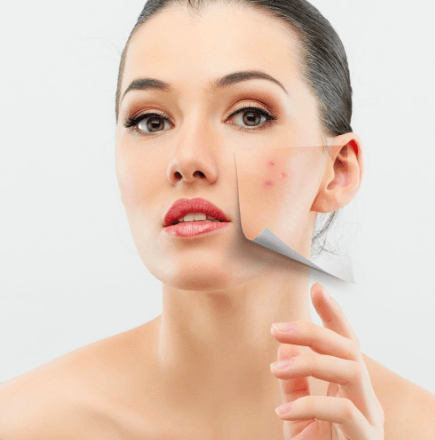Acne & Acne Scars 101: Your questions Answered!
- By websitebuilder
- •
- 23 May, 2018
- •
Learn about Acne & Acne Scar Treatments!

All About Acne
Despite a common stereotype, acne is unfortunately not limited to the teenage years and periods of changing hormones. Acne can come about early, mid or even later in life. It could also be a constant throughout the years, regardless of external stressors. Typically - diet, stress, illness and further factors can culminate to play a major role in developing the right criteria, for acne breakouts.
Living through acne can be a painful experience, both literally and metaphorically speaking - and scars live to tell the tale, on the faces of those who’ve had to encounter and overcome privately frustrating skin ordeals. Due to the fact that acne scars are typically resultant of inflamed blemishes, the scope of severity in scarring is dependent entirely on the nature of outbreaks, skin resiliency and pore breaks.
When skin pores become dense with dead skin cells, bacteria and excess oils, there is pore inflammation, and this tends to cause follicle wall breakage. When this happens, lesions become visible and are often an unsightly and unsettling experience.
If lesions are shallow or minor, the skin is likely to stimulate a prompt healing and recovery response. However, in cases of deep pore wall breakage, infected lesion content disperses into surrounding tissues, forming further and deeper lesions. This is problematic.
What are 4 Types of Ways to Remove Acne Scars?
Due to the fact that there are two different types of acne scarring, the types of ways to remove those scars will differ. There is what’s known as ‘Hypertrophic Scarring’, and ‘Keloid Scarring’. Hypertrophic scarring may not require the same scope of in-depth treatments as keloids will - and this is important to keep in mind when selecting your services and provider.
Hypertrophic Scarring present as less than 4 millimeters above the skin and may be pink or reddish by sight. These scars are contained in that they don’t grow or evolve beyond the initial area of the injury.
Who Gets Hypertrophic Scarring? The elderly, fair-skinned and those with rosacea are more likely to experience hypertrophic scarring.
Keloid Scarring presents as being bigger than injury. caused by the piercing. It grows beyond the site of the original skin injury or issue, and may feel and look like a ball of skin. Typically, keloids develop at the site of ear piercings where a growth of skin is attached.
Who Gets Keloid Scarring? People with darker skin pigmentations, such as Hispanics and African Americans. However, the precise cause of keloids isn’t totally understood.
4 Types of Ways to Remove Acne Scars
This treatment involves swiping a tiny needled pen over your face. This process intentionally causes microscopic skin injuries. Due to these needle punctures, the skin is forced to repair, while stimulating and increasing elastin and collagen production. This is particularly helpful for acne scarred skin and results in smoothed-out skin.
- Chemical Peels
With this treatment, an expertly crafted, safe, skin-friendly chemical concentrate is applied to remove the scarred skin cells. With this strategic surface skin breakdown, healthy skin cells are enabled for optimal grow.
Intense Pulsed Light (IPL) proves to provide excellent results on acne scars. This is due to its active ability for targeted pigment lightening - so it’s specific to the scar tissue area. Important Note: IPL is not suitable for dark skin tones and suitable for light to medium skin types only.
This is the premier non-ablative laser with minimal downtime. The Fraxel laser promotes collagen via deep pore beaming, helping to recraft your skin. It is said to feel like a rubber band snapping against the skin, along with warmth on the area being treated.



